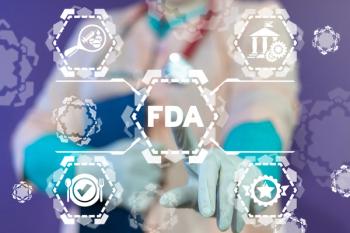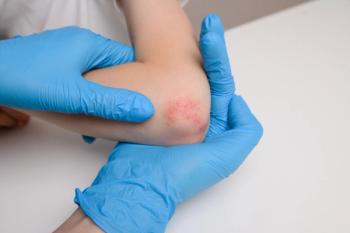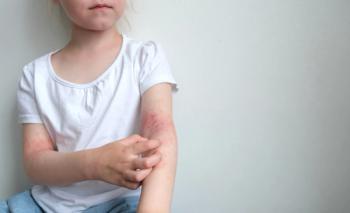
Examining Special Dermatology Needs of Transgender, Gender Diverse Youth
The education on how to treat patients with skin issues in this group needs to be expanded so providers can better treat patients.
The sexual and gender minority population, which includes transgender and gender diverse people, have long been underserved in the field of dermatology.
While the unique dermatologic needs for adult patients in this group have been documented, the knowledge surrounding pediatric and adolescent transgender/gender diverse patients can be grown.
In the study, “Dermatologic considerations for transgender and gender diverse youth,” published by Pediatric Dermatology, researchers found that although the dermatologic conditions faced by transgender and gender diverse youth are also seen in cisgender patients. The cause of their conditions and treatments may differ between the groups which may require special considerations.
“LGBTQ+ patients are an underserved population and I believe that as physicians, we are obligated to provide support to vulnerable groups in order to close the gaps on inequities in healthcare,” said lead author Shane M. Swink, DO, MS, chief resident of dermatology at the Lehigh Valley Health Network in Allentown, Pennsylvania. “On a personal note, as a gay physician, I feel compelled to use my status and privilege as a physician to advocate for all members of the LGBTQ+ community including transgender and gender diverse people.”
With his interests in pediatric dermatology, Swink was particularly interested to review the literature and see what has been done in the treatment of transgender and gender diverse youth. He aimed to summarize the unique dermatologic needs of these patients, with a key focus on the data available in younger groups.
“Many sexual and gender minority individuals are underserved and vulnerable in all fields of medicine, not just dermatology,” Swink said. “This is due to several reasons including discrimination, stigma, and denial of basic civil and human rights for this group. This can lead to things like lack of insurance, lack of access to care, and simply not seeking care from providers due to embarrassment or fear of discrimination.”
Sexual and gender minority individuals are an underrepresented population of patients, and many are speaking up to raise awareness through research and advocacy. This study highlights the role pediatric dermatologists can play in the care of transgender and gender diverse youth including but not limited to treating acne and hair pattern changes as well as being knowledgeable about surgical and other cosmetic options for gender affirmation.
It also dives into the areas for potential future research including dermatologic effects of hormone therapy in children as well as treatments for those side effects.
“The biggest takeaway from this literature review research was that while more research is being done regarding dermatologic care of transgender and gender diverse adult patients, there is ample opportunity for much research and work to be done regarding younger populations,” Swink said.
Pediatric dermatologists increase the quality of care for these patients, the study suggests, by treating dermatologic side effects of hormonal therapy. This help can include providing guidance relevant to dermatologic treatments related to surgical procedures patients may undergo, providing minimally invasive procedures for gender affirmation, and serving as an advocate and educator for patients and their families. There are challenges.
“The skin conditions faced by transgender and gender diverse youth are not specifically distinct from cisgender skin conditions, but they may necessitate a unique or sensitive approach to care,” Swink said. “For example, until December 2021, the iPLEDGE system mandated when treating patients with isotretinoin for acne used gendered (male and female) categories and language. This required a gentle and more gender-neutral counseling regarding iPLEDGE counseling."
“This example highlights the importance of always going into encounters with transgender and gender diverse patients and maintaining a gender-neutral vocabulary,” Swink said. “Some things that occur during encounters can make patients feel uncomfortable or labeled in a way that does not align with their gender identity.”
These can include inadvertently using gendered titles of hair loss patterns, gendered language in educational pamphlets in doctor offices, examination of sensitive areas, and lacking an understanding that a patient's gender may not align with traditionally masculine or feminine features.
“It’s our job as physicians to identify a patient's goals and work toward them in a way that makes them the most comfortable,” Swink said.
The report examined testosterone therapy for this patient population and pointed to its side effects, including the development, or worsening of acne. The treatment for acne follows the same algorithm for acne treatment of patients not taking testosterone therapy for the most part, according to the study.
“A few important differences include the potential need for liver function monitoring in patients being given tetracyclines for acne while taking testosterone therapy due to theoretical risk of hepatotoxicity,” Swink said. “Additionally, antiandrogens, such as spironolactone, that are traditionally used in cisgender females to treat acne cannot be given to transmasculine patients taking testosterone as they directly interfere with the desired masculinization.”
Another potential side effect of testosterone therapy is androgenetic alopecia (AGA).
“Dermatologists can provide numerous treatment options individualized to a patient based on their goals and other treatments they may be undergoing,” Swink said. “These treatments include topical minoxidil and low-level laser light therapy which are FDA approved therapies for AGA, as well as finasteride, platelet rich plasma injections, and oral minoxidil which are not FDA approved for AGA.”
There are many important aspects in the dermatologic care of transgender and gender diverse youth that must be considered, however, one of the greatest tools dermatologists have in their toolkit is education.
“Being able to adequately educate patients and families is so important,” Swink said. “This helps to ensure that patients are receiving high quality care from appropriate professionals and avoiding treatments that may be harmful to their health. Being a supportive provider in the care of transgender and gender diverse youth is critical in helping patients to live their lives as they truly are meant to be, and really has the potential to save a life.”
Reference
Swink SM, Castelo-Soccio L. Dermatologic considerations for transgender and gender diverse youth. Pediatr Dermatol. 2021;38 Suppl 2:58-64. doi:10.1111/pde.14685
Newsletter
Pharmacy practice is always changing. Stay ahead of the curve with the Drug Topics newsletter and get the latest drug information, industry trends, and patient care tips.











































































































































































































